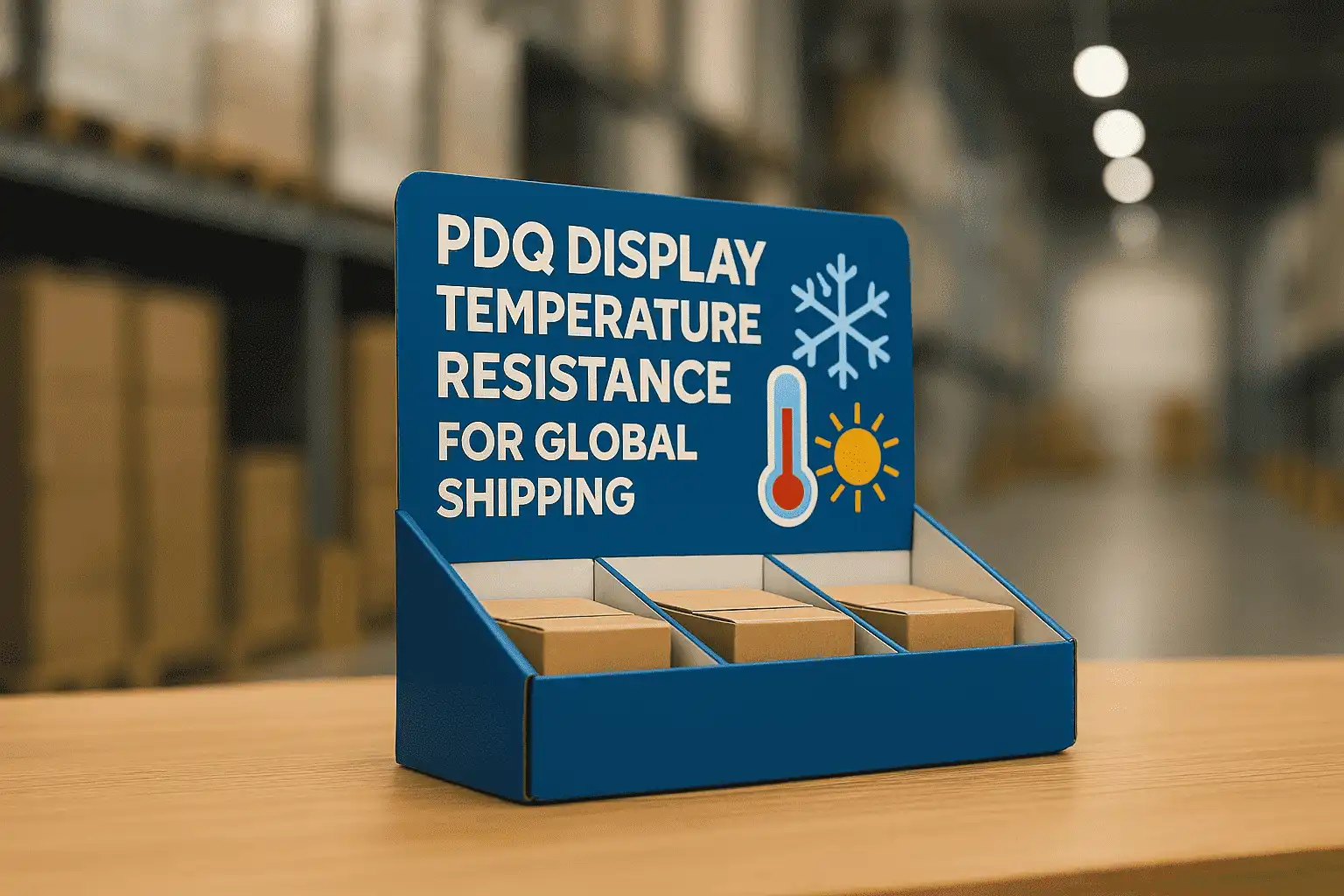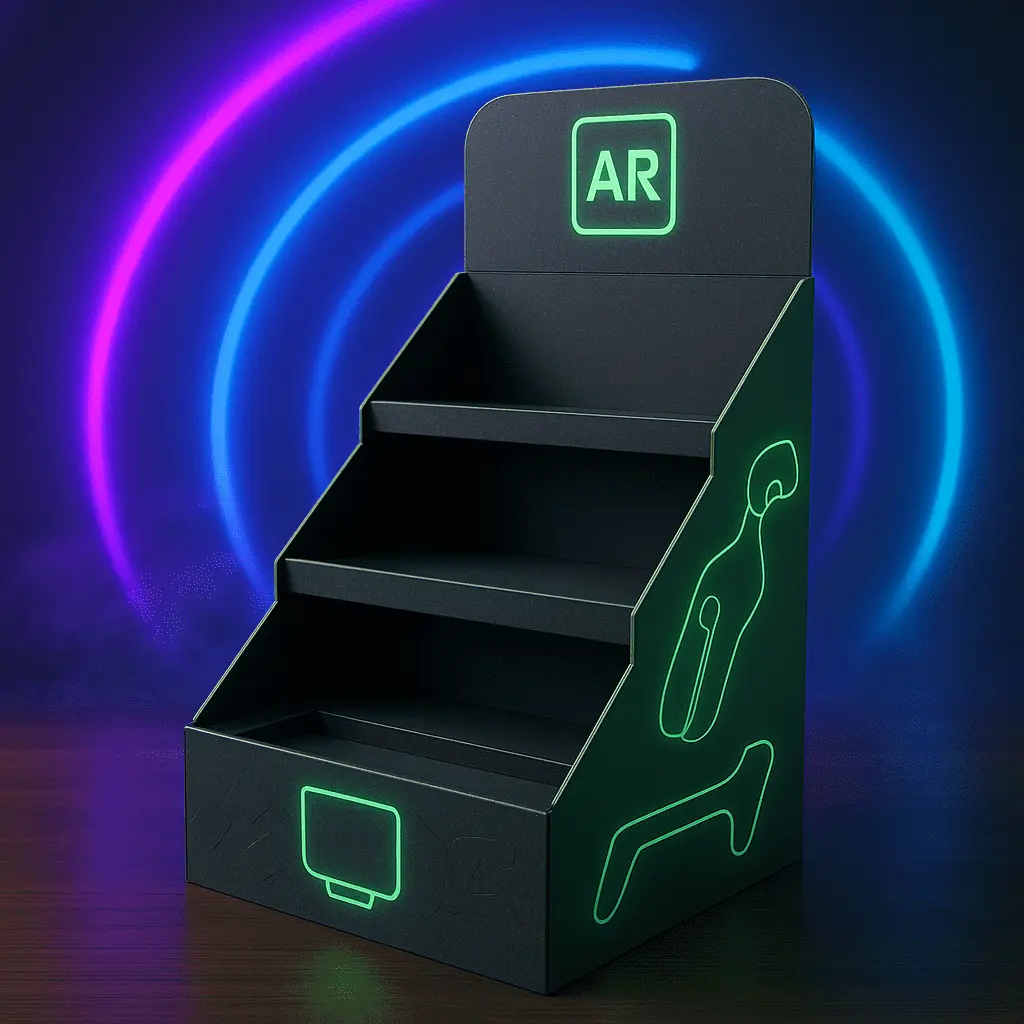PDQ Display Temperature Resistance for Global Shipping
PDQ displays, or Point of Display Quick displays, are essential tools for retailers and brands looking to make a lasting impression on customers. When it comes to global shipping, understanding the temperature resistance of these displays is crucial. PDQ displays must withstand various environmental conditions during transit and storage, from extreme heat to freezing temperatures. Proper temperature resistance ensures that the displays arrive at their destination in pristine condition, ready to showcase products effectively. By considering factors such as materials, construction, and protective measures, businesses can ensure their PDQ displays maintain their integrity and visual appeal throughout the global shipping process.
Understanding PDQ Display Materials and Their Temperature Resistance
Common Materials Used in PDQ Displays
PDQ displays are typically crafted from a variety of materials, each with its own temperature resistance properties. Corrugated cardboard, a popular choice, offers good insulation and can withstand moderate temperature fluctuations. Plastic materials, such as polyethylene terephthalate (PET) and polypropylene, provide excellent durability and resistance to both high and low temperatures. Metal displays, often made from aluminum or steel, offer superior strength but may be more susceptible to temperature-induced expansion and contraction.
Temperature Resistance Properties of Different Materials
The temperature resistance of PDQ display materials varies significantly. Cardboard displays generally perform well between -20°C to 50°C (-4°F to 122°F), making them suitable for most shipping conditions. Plastic displays exhibit a wider temperature range, often withstanding temperatures from -40°C to 80°C (-40°F to 176°F). Metal displays can endure extreme temperatures but may require additional protective measures to prevent warping or damage to surface finishes.
Innovations in Temperature-Resistant Materials for PDQ Displays
Recent advancements in material science have led to the development of innovative temperature-resistant options for PDQ displays. Composite materials combining the strengths of different substances offer enhanced durability and temperature resistance. Nano-coatings and specialized treatments can improve the temperature resistance of traditional materials, extending their usable range and longevity. These innovations allow for the creation of displays that maintain their structural integrity and visual appeal across a broader spectrum of environmental conditions.
Designing PDQ Displays for Optimal Temperature Resistance
Structural Considerations for Temperature-Resistant PDQ Displays
When designing PDQ displays for global shipping, structural integrity is paramount. Engineers must consider how temperature fluctuations affect the overall structure of the display. Incorporating expansion joints and flexible connectors can help accommodate material expansion and contraction. Reinforced corners and edges provide additional protection against impacts that may occur during temperature-induced shifts in transit. Utilizing interlocking components and robust fastening systems ensures the display remains stable across various temperature conditions.
Incorporating Insulation and Protective Elements
Effective insulation plays a crucial role in enhancing the temperature resistance of PDQ displays. Designers can integrate insulating materials within the display structure to mitigate the effects of extreme temperatures. Reflective coatings can be applied to exterior surfaces to deflect heat, while moisture-resistant barriers protect against condensation in fluctuating environments. Strategically placed vents and air channels can help regulate internal temperatures, preventing heat buildup or excessive cooling that could compromise the display's integrity.
Balancing Aesthetics and Functionality in Temperature-Resistant Designs
While prioritizing temperature resistance, it's essential to maintain the visual appeal and functionality of PDQ displays. Designers must strike a balance between protective features and aesthetic considerations. Utilizing transparent temperature-resistant materials for product visibility, incorporating brand colors and graphics that remain stable under various conditions, and creating modular designs that allow for easy replacement of temperature-sensitive components are all strategies to achieve this balance. By seamlessly integrating protective elements into the overall design, PDQ displays can remain visually striking while withstanding the rigors of global shipping.
Testing and Quality Assurance for Temperature-Resistant PDQ Displays
Environmental Chamber Testing Procedures
Rigorous testing is essential to ensure PDQ displays can withstand the temperature extremes encountered during global shipping. Environmental chamber testing simulates various temperature conditions, allowing manufacturers to assess the display's performance under controlled circumstances. These chambers can replicate hot and cold environments, as well as rapid temperature fluctuations. During testing, displays are subjected to programmed temperature cycles, often ranging from -40°C to 80°C (-40°F to 176°F), to evaluate their resilience and identify potential weak points.
Real-World Simulation and Field Testing
While laboratory testing provides valuable data, real-world simulations offer insights into how PDQ displays perform under actual shipping conditions. Field testing involves sending sample displays through typical shipping routes, exposing them to authentic environmental variations. This process helps identify issues that may not be apparent in controlled settings, such as the combined effects of temperature changes, humidity, and vibration. Manufacturers can use GPS-enabled temperature loggers to track and analyze the conditions experienced by the displays throughout their journey, providing valuable data for further improvements.
Quality Control Measures and Certification Standards
Implementing robust quality control measures is crucial for ensuring consistent temperature resistance across all produced PDQ displays. This includes regular material testing, batch sampling, and comprehensive pre-shipment inspections. Adhering to international standards and obtaining relevant certifications, such as the International Safe Transit Association (ISTA) standards for package testing, provides additional assurance of a display's ability to withstand global shipping conditions. By maintaining stringent quality control protocols and meeting industry standards, manufacturers can guarantee that their PDQ displays will perform reliably in diverse temperature environments.
Conclusion
Temperature resistance is a critical factor in the success of PDQ displays during global shipping. By carefully selecting materials, implementing innovative design strategies, and conducting thorough testing, manufacturers can create displays that maintain their integrity and visual appeal across various environmental conditions. As the global market continues to expand, investing in temperature-resistant PDQ displays ensures that products arrive at their destination ready to captivate customers and drive sales. With ongoing advancements in materials and design techniques, the future of PDQ displays promises even greater resilience and performance in the face of temperature challenges.
Contact Us
For more information about our temperature-resistant PDQ display solutions and how they can benefit your global shipping needs, please contact us at support@fetchingprinting.com. Our team of experts is ready to help you create displays that stand up to the rigors of international transit while showcasing your products in the best possible light.
References
1. Journal of Packaging Technology and Research, "Temperature Effects on Corrugated Board Packaging During Transit," 2023.
2. International Journal of Retail & Distribution Management, "The Impact of Point-of-Purchase Displays on Consumer Behavior in Global Markets," 2022.
3. Materials Science and Engineering: A, "Advancements in Temperature-Resistant Polymers for Retail Display Applications," 2023.
4. Packaging Technology and Science, "Thermal Performance of Insulated Shipping Containers: A Comprehensive Review," 2022.
5. Journal of Applied Packaging Research, "Design Considerations for Temperature-Resistant Retail Displays in International Supply Chains," 2023.
6. International Journal of Physical Distribution & Logistics Management, "Quality Assurance Protocols for Temperature-Sensitive Product Displays in Global Retail," 2022.





